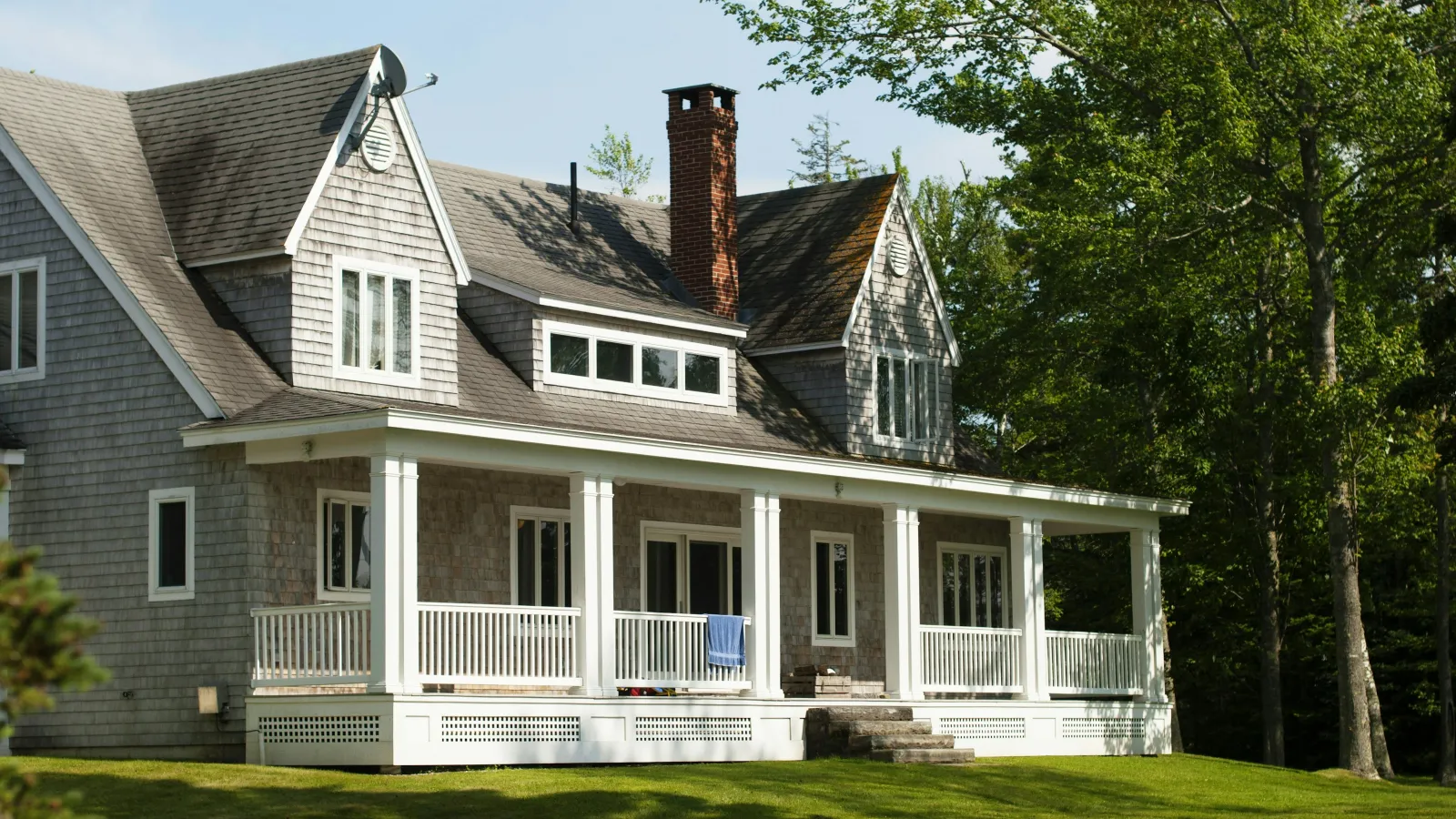What is Batt Insulation?
Batt insulation is one of the most common materials used to insulate homes. It's affordable, widely available, and simple to install in the right conditions. You've likely seen it before, those soft-looking pink or yellow sheets tucked between wall studs in a house under construction or renovation. But what exactly is batt insulation, and is it the right choice for your home?
This type of insulation comes in pre-cut panels or rolled sheets and is designed to fit between standard framing spaces in walls, ceilings, and floors. It's most often made of fiberglass but can also be made from mineral wool or cotton. Homeowners and contractors alike often choose batt insulation for its versatility, ease of installation, and energy-saving benefits.
At USA Insulation, we work with homeowners every day to choose the best insulation for their specific space. Here's what you need to know about batt insulation and how it might work in your home.
How Batt Insulation Works
The purpose of batt insulation is to slow the transfer of heat between the inside and outside of your home. In the winter, it helps keep warm air indoors. In the summer, it helps keep the heat out. This improves comfort and helps your HVAC system operate more efficiently.
The effectiveness of batt insulation is measured by R-value, which reflects how well it resists heat flow. Higher R-values mean better insulation. Fiberglass batts typically offer R-values from R-11 to R-38, depending on their thickness and density.
To work well, insulation batts need to be installed properly. That means a snug fit with no gaps, compression, or areas where the material has been stuffed in carelessly. Even small installation mistakes can lower its performance.
Where Batt Insulation Is Used
Batt insulation is commonly used in many areas of the home, especially where the framing is accessible. Typical applications include:
-
Exterior walls
-
Interior partition walls (for sound reduction)
-
Attics
-
Floors above unconditioned spaces (like garages or crawl spaces)
-
Ceilings with open joists
-
Basement rim joists
Because batts are pre-cut to fit standard spacing between studs and joists, they are often used during new construction or major renovations where walls or ceilings are already exposed.
What Is Fiberglass Batt Insulation?
Fiberglass batt insulation is made from fine glass fibers that are spun into a fluffy mat and bound together to hold its shape. It often has a paper or foil facing that acts as a vapor barrier. Fiberglass is popular because it's affordable, non-combustible, and easy to find in most hardware or building supply stores.
You might recognize it by its pink or yellow color, but not all fiberglass batts look the same. Some brands offer white or brown fiberglass, depending on the binding agents used.
Fiberglass batts do a solid job at insulating, provided they're installed carefully. They're not air barriers, so any gaps around wiring or pipes can allow air to pass through if not sealed with caulk or spray foam.
Comparing Fiberglass Batts to Other Options
Fiberglass batt insulation is often compared to spray foam, blown-in cellulose, and rigid foam panels. Each has its own benefits and best-use scenarios.
Fiberglass batts are typically less expensive up front than spray foam. They also allow the walls to "breathe" more than spray foam does, which can be a benefit in certain climates. However, fiberglass doesn't air-seal on its own and can let air leak through small gaps unless those gaps are addressed separately.
Spray foam, on the other hand, can air seal and insulate in one step but comes at a much higher cost and requires professional equipment to install.
If you're comparing options, it comes down to what areas of your home need insulation, what kind of budget you're working with, and how much control you want over air leaks and moisture.
Installation: Can You Do It Yourself?
Handling fiberglass insulation without the right protective gear can cause skin irritation, eye discomfort, and breathing issues. Beyond safety, proper installation requires precision. Batts must be cut accurately and fitted snugly without compression or gaps. Even small missteps, like leaving spaces around outlets or failing to seal edges, can significantly reduce the insulation's effectiveness.
Many homeowners unintentionally compromise their insulation's performance by trying to tackle it themselves. Improper installation often leads to uneven temperatures, higher energy bills, and costly redos. To ensure your home gets the full benefit of batt insulation, it's best to leave it to trained professionals like the team at USA Insulation. We install it correctly the first time, so you get lasting comfort and efficiency without the headaches.
Moisture and Mold Concerns
Moisture can reduce the effectiveness of batt insulation and cause other problems. If fiberglass batts get wet, they can lose their shape, settle, and lose their insulating power. Wet insulation can also become a breeding ground for mold or mildew, which can lead to air quality issues.
In areas where moisture is a concern it's important to use the correct type of batt insulation or pair it with a vapor barrier. Some batts come with built-in moisture barriers, while others require a separate product.
You should also be sure the space is well-ventilated and that any leaks or condensation issues are addressed before installation.
Sound Control Benefits
Batt insulation is not just for thermal comfort. It also helps reduce noise between rooms and from outside. Interior walls insulated with fiberglass or mineral wool batts can significantly reduce sound transmission.
This is especially useful in shared walls between bedrooms and living rooms, between floors in two-story homes, or in home offices where noise control is important.
While not as effective as dedicated acoustic materials, batt insulation does offer noticeable sound-dampening benefits at a relatively low cost.
Fire Safety and Durability
Fiberglass and mineral wool are naturally non-combustible. That means they don't require added fire retardants and will not contribute to the spread of flames in the event of a fire. This makes them a safe choice for insulating walls, ceilings, and floors.
As for durability, batt insulation can last for decades when properly installed and protected from moisture or pests. It does not settle like blown-in cellulose, and it holds its shape well under normal conditions.
Regular inspections can help identify any early signs of damage or areas where insulation may have shifted over time.
Environmental Considerations
Many batt insulation products are made with recycled content, which helps reduce waste and demand for raw materials. Fiberglass batts, in particular, often contain glass that has been melted down and spun into fibers.
Choosing batt insulation can also help lower your energy bills, which in turn reduces your home's environmental impact. A well-insulated home uses less energy for heating and cooling, which means fewer greenhouse gas emissions.
For homeowners focused on eco-friendly upgrades, batt insulation is a straightforward and effective place to start.
What About Cost?
Cost is one of the main reasons fiberglass batt insulation is so widely used. It offers solid performance at a price point that fits most budgets.
While prices vary depending on the R-value and the size of the space, batt insulation is generally less expensive than spray foam or rigid foam board. It also installs quickly, which helps lower labor costs if you're hiring a contractor.
And because it improves your home's energy efficiency, the upfront cost of batt insulation can often be recouped in the form of lower utility bills over time.
Is Batt Insulation Right for You?
Batt insulation works best in homes where the wall cavities, floors, or ceilings are open and accessible. If you're building a new home, renovating, or finishing a basement or attic, it's a practical option worth considering.
It may not be the right choice for every space. Tight, irregular, or hard-to-reach areas might benefit more from a spray foam or blown-in product that fills every gap. But in standard walls, ceilings, and floors, batt insulation is reliable, cost-effective, and easy to maintain.
If you're unsure whether fiberglass batt insulation will work in your home, USA Insulation can evaluate your space and make a professional recommendation.
Call USA Insulation to Get Started
Choosing the right insulation is a key step toward improving your home's comfort, energy efficiency, and long-term value. Batt insulation continues to be one of the most popular and practical choices for homeowners, especially when professionally installed.
If you're looking for help insulating a new build, remodeling a room, or simply want to make your home more efficient, contact USA Insulation today. Our team can walk you through your options, recommend the right R-value for your climate, and install insulation that performs the way it should.
Reach out to us to schedule a consultation and learn how batt insulation can help keep your home comfortable year-round.



